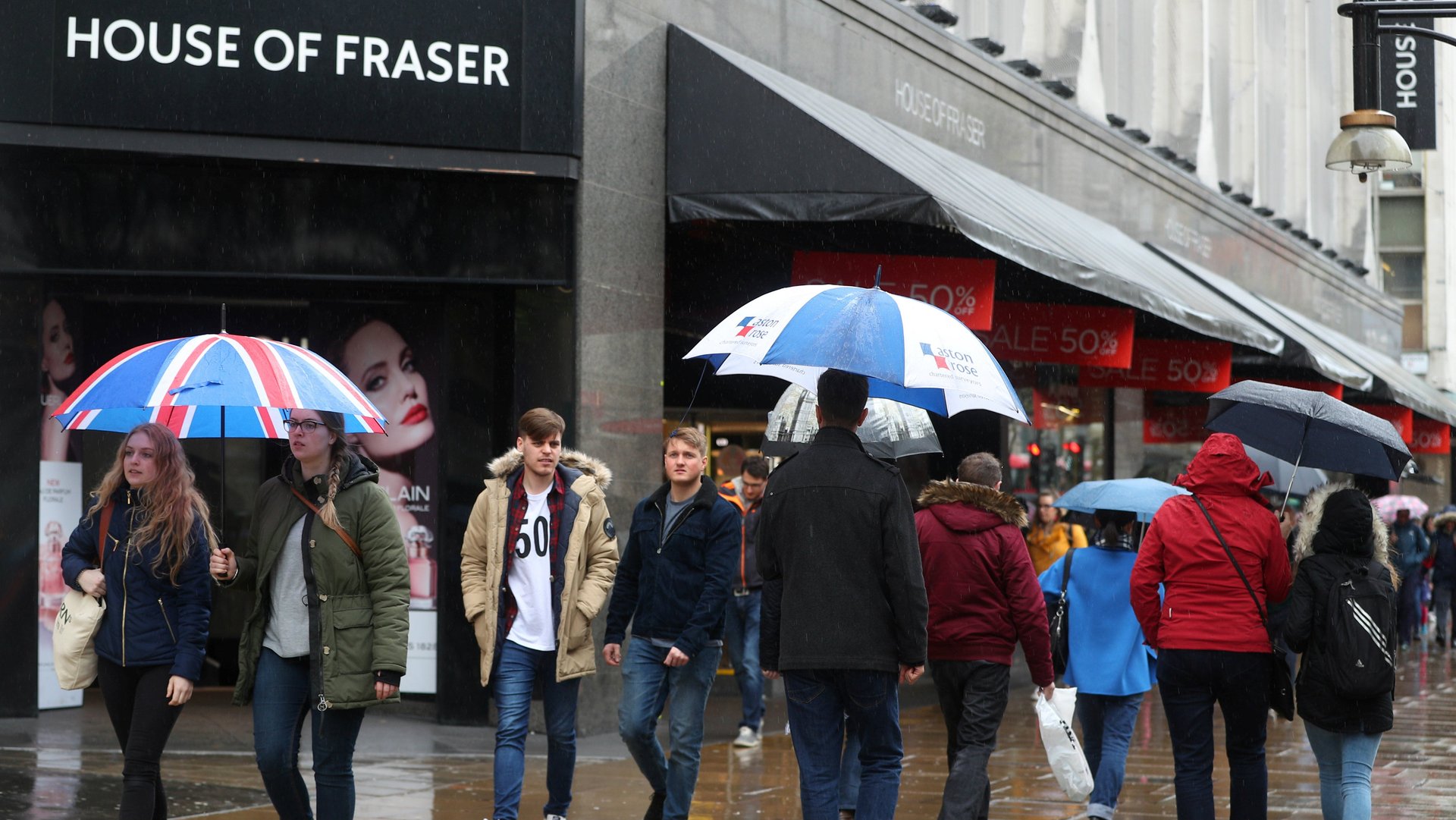The rapid demise of British retail
Can the UK still be considered a nation of shopkeepers if there aren’t any shops?


Can the UK still be considered a nation of shopkeepers if there aren’t any shops?
Hardly a day passes in the British press without news of another retail or restaurant chain facing bankruptcy and closing stores. Even the heavyweights of British retail have not been immune, with Marks & Spencer planning to close 100 shops in the next few years and House of Fraser saying it will close half of its department stores. Vast numbers of restaurant chains are hemorrhaging money and many are full-on collapsing, putting thousands of jobs at risk.
The first half of 2018 saw the largest net decline in stores on the British high street in five years, according research by PwC and the Local Data Company. On the country’s top 500 retail streets—known as high streets—2,692 stores closed versus 1,569 openings, for a net decline of 1,123 stores. In the first half of 2017, there was a net decline of 222 stores. On average, 14 store units are closing each day.
Across the whole of the UK, on and off the high street, the trend is just as bleak:
PwC attributes the decline to an increase in online shopping and “in-home leisure,” as well as more companies trying to restructure their business. The decline is hitting fashion and electric shops particularly hard, as well as pubs. Restaurant chains are suffering as their costs increase, but also from an over-expansion in recent years, often driven by private equity money.
In the US, fears of a “retail apocalypse” are belied by data that show low- and high-end shops thriving at the expense of mid-tier options, which tracks the shrinking of the middle class.
The British high street isn’t adapting to changing economic conditions fast enough. “The openings across ‘experiential’ chains, such as ice cream parlours, beauty salons and vape shops, haven’t been enough to offset closures in the more traditional categories,” said Lisa Hooker, consumer markets leader at PwC. “The British high street is in urgent need of new ways of thinking and new forms of retail.”